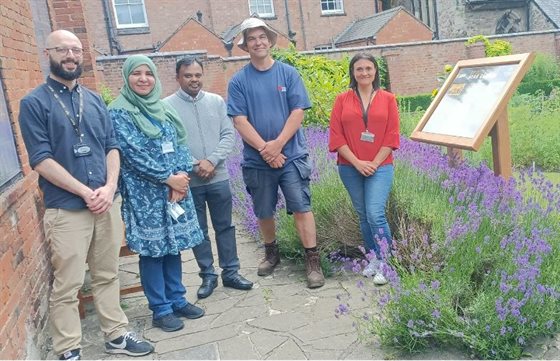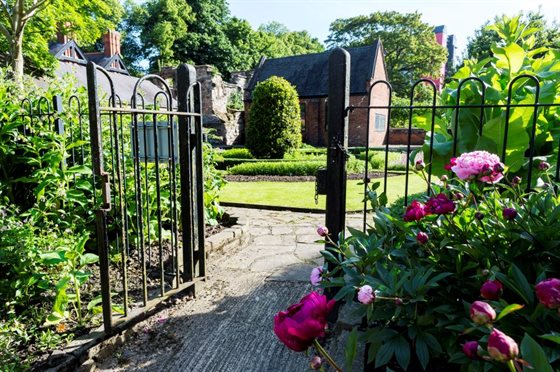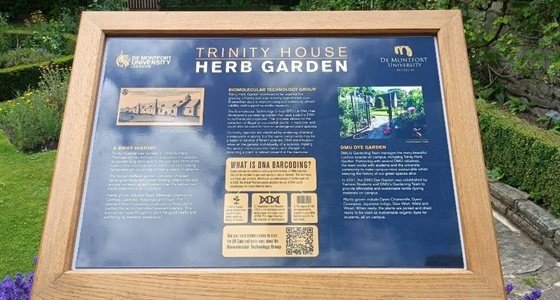A historic herb garden in the heart of campus is going back to its roots as the base for a new study into herbal medicines.
Led by Dr Tiziana Sgamma of De Montfort University Leicester (DMU)’s Biomolecular Technology Group, it will use a new method of plant DNA barcoding to identify varieties and help solve the problems caused by misidentification.

Dr Sgamma’s work has shown that the varieties which are being grown and used are not always the correct ones, so the team are using the Trinity Herb Garden, at the back of Trinity House, for new research.
She said: “Many people grow herbs and harvest them for us in home remedies, but you cannot be sure that you are using the right plant. Labels and ‘looking similar’ does not guarantee that you have the right plant, and this can lead to a completely different outcome and could also interact with prescribed medicines.”
The Biomolecular Technology Group has launched a new trial using popular herb Tulsi, also known as Holy Basil, which they are growing in DMU’s herb garden. Each species will be identified using DNA barcoding.

DNA barcoding is a relatively new method of identifying plants. Unlike visual identification or relying on labels, it constructs profiles from the genetic material in the plants to determine the exact species and variety.
It is the same method used recently by Kew Gardens to discover a new, third species of giant waterlily which until now had been thought to be one of the other two known species despite being in its collection for 177 years.
Tulsi is widely used in Ayurvedic medicine and in home remedies for bringing down fevers, treating coughs and colds and also in managing diabetes symptoms.

Steven Peachey, of DMU’s Heritage Centre, said the project was taking the herb garden back to one of its original uses as a medicinal garden.
He said: “We know that when it was a hospital, herbs were grown in the garden that were then used in herbal treatments. In medieval times, they would make comparisons with pictures in manuscripts to ensure that they were using the correct plants. So in many ways, this study is going back to the roots of the herb garden.”
The team have worked with the heritage centre and DMU gardener Dan Kirk on the project which has also seen information boards go up in the garden outlining the work being done and giving information about the history of the garden.
It can be seen this weekend (Sunday July 31) when the garden and other parts of campus are opened to the public as part of Heritage Sundays, which celebrates the history of Leicester.
Dr Sgamma’s work has been chosen to feature in the British Science Festival in September. The session is free but tickets must be booked in advance.
Posted on Wednesday 27 July 2022